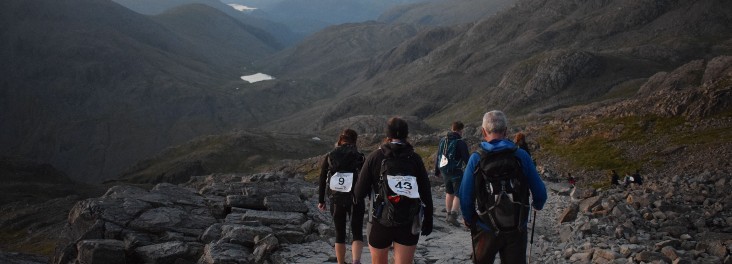Trekking training zone
We are delighted you have decided to take part in a trekking challenge for us, and welcome you as part of Team Animal! We are here to help, so check out the information on kit and training, and give us a shout if you have any questions.
Gear
Boots and socks

Clothing
Layers, layers, layers. Most trekking will be in alpine conditions, with what can feel like multiple seasons all in one day. So layer up and you can remove or add as you go on throughout the day.
We always recommend packing a waterproof jacket and a warm hat to save you from any wind, rain or cold mist.
Charity Challenge have five top Gear Heros as voted by trekkers.
A good rucksack.
The importance of buying and breaking-in a solid pair of trekking boots is no secret these days, but you should never overlook the impact that your day backpack has on your trekking experience as well, especially if you'e on a long haul, camping-based challenge. If your rucksack is too small or your belongings bulge out making it sit awkwardly on your back, if it's not fitted properly (too loose or too tight), the straps can dig into your back and cause you severe discomfort. In short, a bad backpack can make a nine hour trek feel 100 times longer! It's hard to appreciate where you are and what you're doing if all you can think of about is backpack pain!
Toiletry essentials
From something big to something little, but just as important! Figuring out what items from your morning routine you can or absolutely can't be separated from can be a massive brain ache.
But help is at hand! Our intrepid Charity Challengers recommend their can't-live-without trekking toiletries, tiger balm/vaseline, anti-bacterial gel and wet wipes!
Comfy clothes
It's all about comfort over style when it comes to trekking. When you're camping at Kilimanjaro night-time at minus 10 degrees, shivering in your silk pyjamas or novelty boxer shorts, it's very little consolation that you look fabulous!
Sweets
One massive perk of trekking is that, since you are burning through hundreds of calories a day, you actually need to consume lots of sweets and trekking snacks to give you energy for the goodness of your health. Guilt-free sweets! How often in life does that happen! The brave trekkers who took on our North Pole challenge earlier this year had to consume several bars of chocolates and packets of sweets as part of their actual diet whilst on the expedition!
A little luxury
There's nothing like having a little something to look forward to at the end of a long hard trek. Jo Berridge a trekking regular, recommends "hot chocolate, foot cream, and a spiky massage ball that was a lifesaver in Peru - it ended up going home with someone else and I've bought a new one - was great for achy calves from walking and shoulders from carrying the backpack."
Training
As with any challenge the fitter you are the more you will be able to enjoy your trekking and the amazing views.
No matter the length or difficulty of your challenge it's always good to start training early. We recommend adding in hill or stair walking with your boots and a daypack similar to what you will carry on your challenge in variable weather conditions is also recommended at least once a week.
Basic 9-Week Training Program
As your challenge approaches start by building a good strength base early in the season. As you need more endurance, you can easily swap out short-burst power for long-burn performance sessions. Think of your muscles as a building blocks for fitness. As you move from session to session, you will build on the fitness and strength foundation you've made.
- Weeks 1-3: Strength-training 3 days per week, 1 hour/session. Build your strength now and you'll have muscle that you can later use to build up your endurance. Keep rest periods to a minute or two, High Intensity Interval Training (HIIT) will be perfect for these sessions.
- Weeks 4-6: Add one endurance workout every week for 45 minutes at moderate intensity (e.g. jogging, hiking).
- Weeks 7-9: Increase the intensity of your weekly endurance workouts to 1.5 to 2 hours and add 1 day of high-intensity exercise with high output but less weight (e.g. speed hiking).
If you have signed up to a challenge with Action Challenge or Charity Challenge, our charity providers, you will also be sent a training programme that's tailored to your challenge duration and intensity.




